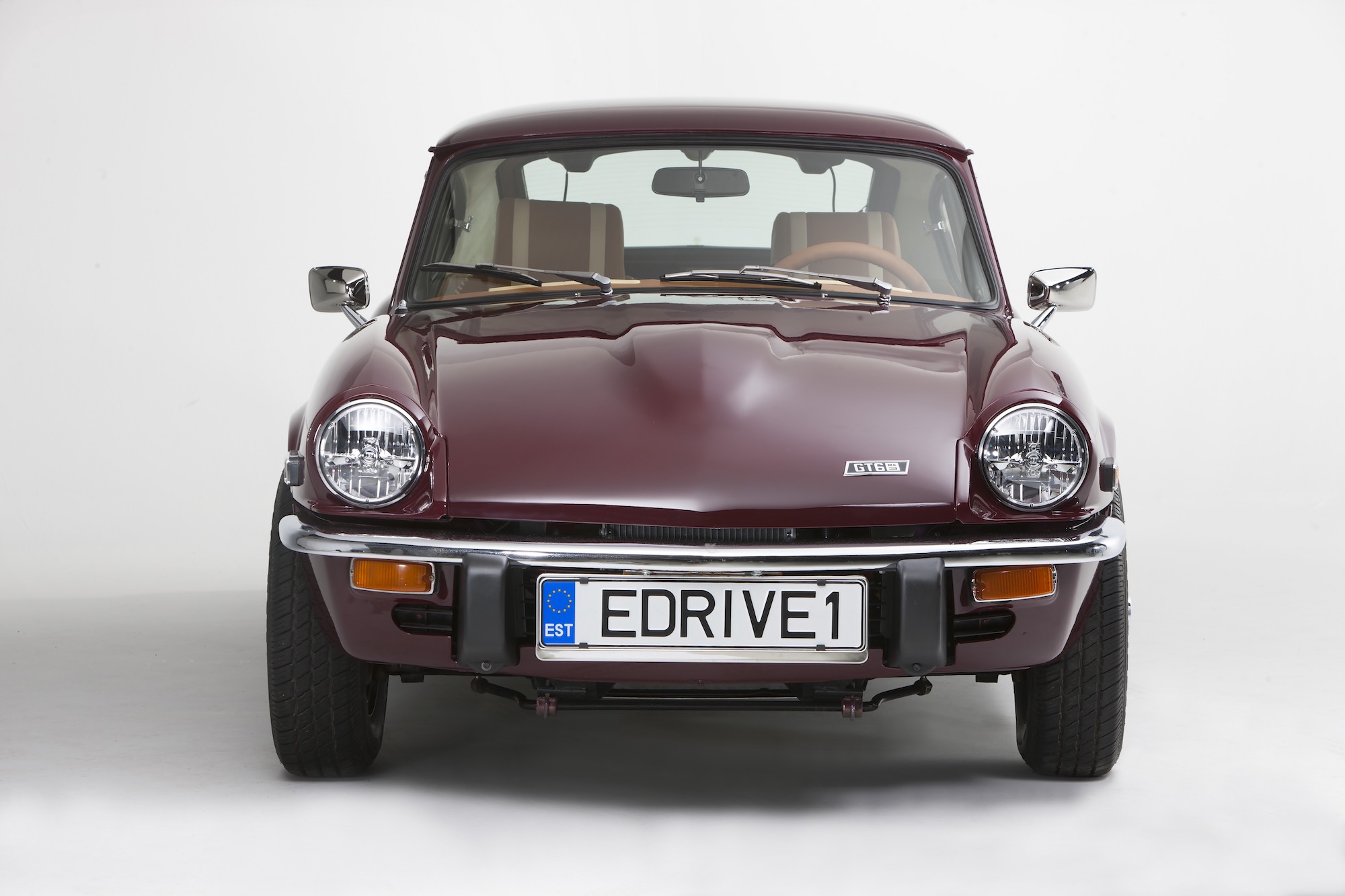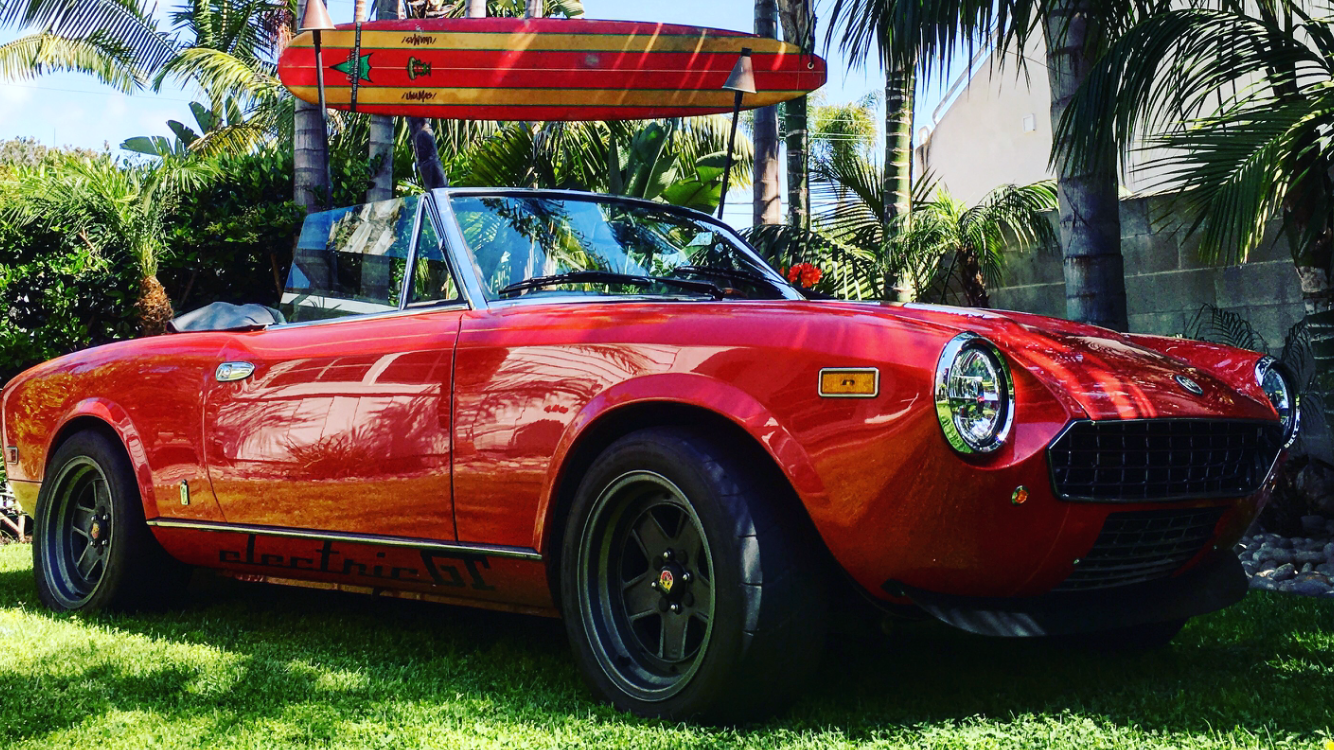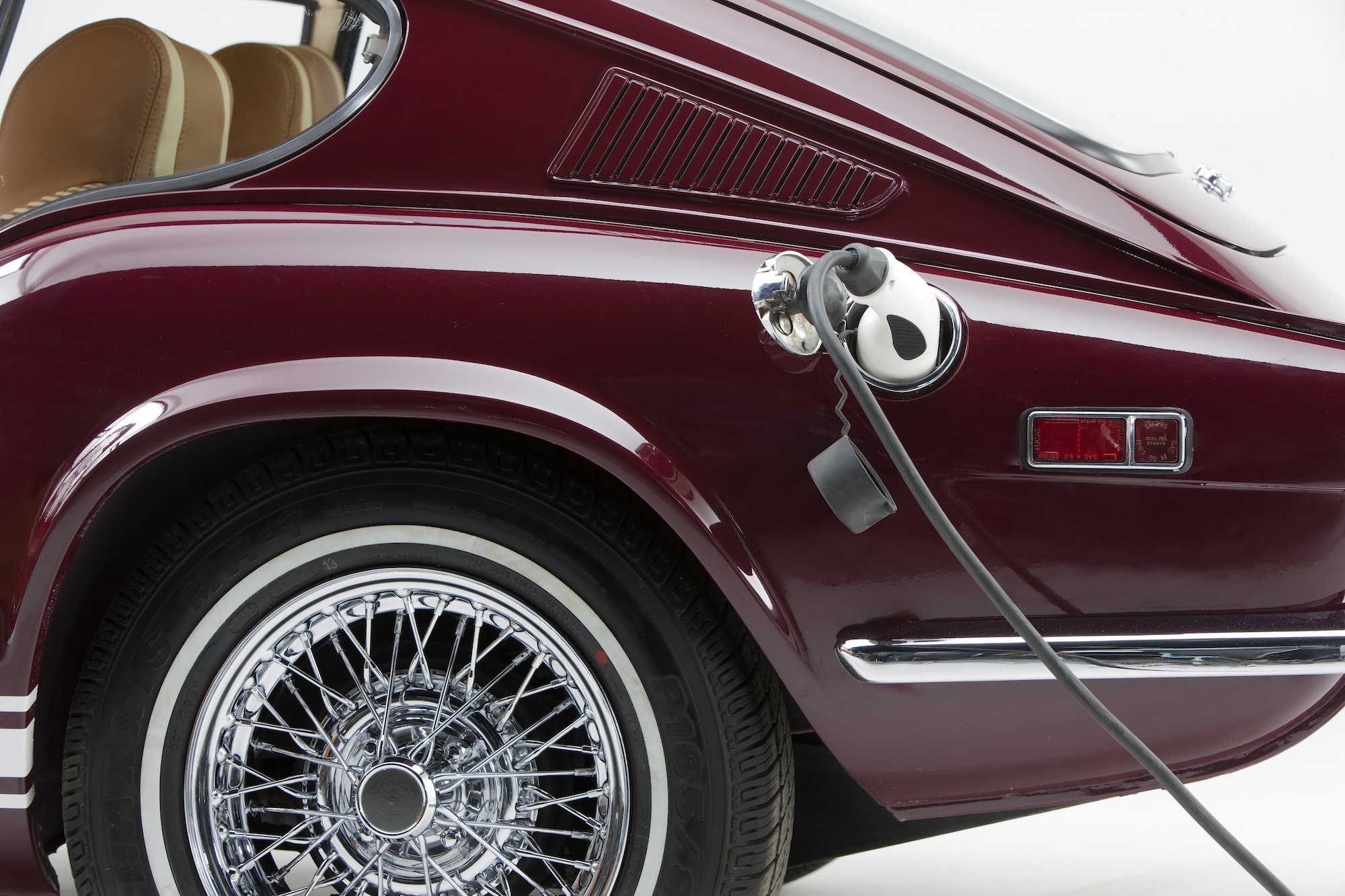As brilliant as contemporary electric cars are, they seem to look like appliances. Packed with clever tech to make the best out of each watt-hour batteries have, they end up looking like each other. In certain colours these sleek efficiency machines may even resemble a space-age clothes iron (looking at you, Model S). Luckily for us, car aficionados, you can actually combine the exciting designs of old and new cutting edge electric car technology. The result is a car no person can hate – boasting both appealing looks and no carbon footprint.
Why go electric?
There is no denying that internal combustion is an exciting process, it has been putting smiles on enthusiasts’ faces for more than a century. But those engines, especially the old ones, come with their own disadvantages. Firstly, they’re dirty and inefficient, emitting heaps of fumes and, sometimes, seeping with oil. The electric drivetrain is not only cleaner, it requires virtually zero maintenance, a stark contrast from your average classic motor. There is no denying that it is better to have a working electrified vintage car, than a petrol-powered one that’s rooted in a garage because there is no way to source parts. In more extreme cases, the engine might be missing altogether, and that’s exactly what builders from Electric GT started with. They found a Magnum P.I.-esque Ferrari 308 GTS which engine was destroyed in a fire. Instead of looking for a Ferrari power unit, they decided to bring this 80s icon into the 21st century by converting it to run on electrons.
What is more, electrifying your classic is very eco-friendly. Tesla, BMW, Nissan and other would like you to believe that buying their off-the-shelf EVs is the best thing you can do for our little green-blue globe, but these are very demanding to produce. Not only their manufacturing requires heaps of materials, car bits are often shipped around the world on polluting container boats in order to build each vehicle. There is no denying the fancy new electric components for your classic conversion would still require manufacturing and shipping, but at least you’d be recycling the car itself.
Mind you, electrifying your classic properly is costly - the conversion will set you back at least 50,000 dollars or Euros, depending on where you are living and what car you are planning to convert. Thus, it is not a financially sound way of resurrecting a neglected vintage car. Of course, more affordable DIY solutions are available and there are plenty of companies selling kits or components for such jobs. Going down this route may save you some money (new components for a basic decent conversion can cost around $20,000), but will not guarantee top-notch quality the conversion specialists are offering. Classic conversion companies risk their reputation and offer a warranty, so they have to put a sufficient number of R&D hours into their projects. There is more to electrification than just swapping the motor and putting some batteries – the rest of the components have to be upgraded accordingly. In order to optimize their conversions, Retro-EV model the whole system with computer prior to manufacturing it for a specific car.
Where to start?
If you chose to leave electrification to professionals, there are two ways you can choose – converting a car you already have or buying one that’s been electrified by conversion experts. The latter option is relatively hassle free, but leaves you with limited choice – the aforementioned Retro-EV supply MG MGA Roadsters (starting at EUR 150,000) and Zelectric can offer you various air-cooled VWs from USD 68,000. All of the aforementioned specialists can convert virtually any vintage automobile into an electric cruiser, but the car has to be immaculately restored before even starting the modifications. Take a look at one of their creations:
The easiest way to join the classic EV club is to start with an air-cooled VW or early Porsche. These cars have been darlings of aftermarket culture for decades, due to their availability, simplicity and shared a basic structure. Aside from aforementioned California-based Zelectric, pretty much any electrification specialist would take on your air-cooled people’s car. If California is too far, try contacting New Electric in the Netherlands. Although VWs are the easiest choice, virtually any vintage car can be converted.
More than it meets the eye
On the outside, these classic electric cars almost look standard, but the unassuming exterior is hiding some clever bits. Unlike certain DIY electric conversions, all cars from Zelectric, Retro-EV or Electric GT have adjustable regenerative braking, which helps to prolong the range by conserving energy when slowing down. Zelectric and Electric GT conversions also often undergo a bit of an increase in weight in power, thus they need uprated suspension, tires and brakes to deal with these changes. Retro-EV, on the other hand are strong supporters of the original driving feel, thus they put efforts to stay as close as possible to the original vehicle’s weight and do not exceed original power figures by a large margin. Of course, all of the suspension and brakes receive an overhaul, but the company aims to maintain the original driving physics of the car.
This chase of authentic balance and weight puts Retro-EV creations at a slight disadvantage compared to modern EVs, such as Teslas. Whereas Teslas are engineered to host as many batteries as physically possible, Retro-EV prioritize driving feel over range, and only stash a reasonable amount of batteries. That does not mean that one will be stuck overnight to charge their batteries every 150 kms should they go on a road trip – Retro-EV’s conversions support multiple rapid charging standards, so there should not be a problem to fill your classic with electron juice.
Easily the least appealing point of EV conversion is actually making it road legal. Depending on where you happen to live, it can become quite a headache. Overall, the requirements for conversions are pretty much uniform across the US, so companies based (e.g. Electric GT or Zelectric) can ensure compliance with these regulations. Things are a tad more complicated on the opposite side of the Atlantic – even though vehicles from any EU state can be driven in all of the EU, the requirements for conversion differ per country. In some of the countries, such as the Netherlands, the EV conversion must weigh close to the original and produce similar amounts of power, so not to put excessive stress on other systems. All of the electrical bits must comply with EU safety requirements. The good news is that companies operating in the EU have the know-how to meet the safety regulations – New Electric has registered their vehicles in the Netherlands and Retro-EV – in Finland. There is nothing worse than finishing your conversion to electric and not being able to drive it.
Future-proof choice
Many purists would find it blasphemous to replace a living, beating internal combustion heart of a classic with a seemingly sterile electric powerplant. Folks at Zelectric are well aware of these fears, thus they ensure that their modifications are completely reversible. No welding or drilling of the body is required and all of the additions can be just bolted on. The owner can always revert their car back, should they feel like burning dinosaurs with their VW once more. This way, the modifications do not have a negative effect on car’s value.
Electrified Fiat 124 SpiderRetro-EV use a different approach to ensure you do not regret electrifying your classic. Engineers there are well aware of battery technology progressing at an enormous pace and battery density that is achieved today will be laughable in a decade. Anticipating this issue, Retro-EV have designed their batteries to be easy to swap, so should their customers feel like extending the range on their EV in the future, it would only take a short visit to an Retro-EV service point.
Clearly then, there is an appeal to swapping out an old-fashioned powerplant for a cutting edge electric motor in your classic. Not only would a classic EV look better than a Nissan Leaf, but it will also be more fun to drive. Companies electrifying the classics are well aware that the enthusiasts are looking for more than just a plain vehicle, and make sure that their cars deliver thrills. Driving an electric classic is not for everyone, but that will set those few willing to from the rest.
---
Find your dream car among our Car Categories!

















